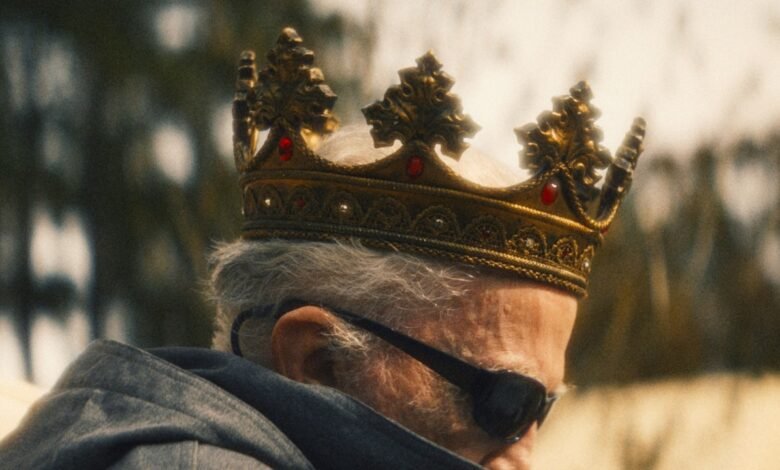
There are few filmmakers more curious about the emotional lives of the elderly than the wunderkind documentarian Lance Oppenheim. In 2020, Oppenheim, then twenty-four years old, released “Some Kind of Heaven,” a documentary about an enormous retirement community in Florida that is more like an amusement park or a college campus than a place where people go to grow old. The community, called the Villages, provided no shortage of eccentric personas for Oppenheim’s generous character studies: one central figure of the film was a bad-boy senior citizen named Dennis, who lived in a van by the Villages, trawling the property for women to hitch his wagon to, both romantically and financially. “I said from the get-go that I wanted to live fast, love hard, and die poor,” he said.
This spring, Oppenheim released “Spermworld,” a documentary adaptation of a Times story about the sperm-donation black market. This film, too, is a series of portraits, and one of “Spermworld” ’s subjects is a single sixtysomething sperm donor named Steve who gives women sperm out of some do-gooder instinct gone astray. He expects nothing in return—until he forges a connection with one of the recipients, Rachel, many decades his junior, who clings onto the hope that she will get pregnant in spite of having cystic fibrosis. The pair strike up an unlikely and bittersweet friendship that teeters, achingly, on the brink of romantic. From Oppenheim’s vantage, the elderly are riveting subjects, full of experience and regret, and imbued with a sense of urgency as they try to fulfill their desires.
The subject of Oppenheim’s newest project, an HBO docuseries called “Ren Faire,” is George Coulam, the eighty-six-year-old overlord of the Texas Renaissance Festival, the largest such fair in the United States. Renaissance enthusiasm is more than just a niche subculture: Coulam’s fifty-five-acre festival draws more than half a million visitors annually, and it is so elaborate that its Web site provides a “Survival Guide for Newbies.” Coulam, a detractor from the Mormon Church, has been running the festival for more than four decades, a time over which he incorporated his land as a city in Texas to circumvent local law.
King George, as he is often called, is a genuine oddball. His personal Web site boasts that he is a “healthy 6’2”, 173 lbs., 86-year-old sexually active Caucasian male entrepreneur.” He is, like so many self-mythologizing entrepreneurs, an exasperating visionary, both fearsome and feeble. Coulam listens to Enya all day, every day, and plasters his walls with grammatically strange reminders to himself. (“Life . . . Health & Longevity 95 . . . Companionship . . . Female . . . Financial Security & Team,” one of them reads.) He spends much of his time screening women he’s met through a sugar-daddy Web site; he categorically rejects those with fake breasts. He boasts about his reading habits and his rococo bathroom. “It’s overly decorated,” he muses. “That’s what art is meant to be.”
In nine years, at the age of ninety-five, George has plans to participate in an assisted-suicide program in Switzerland. This means that he must find the fair’s next executive, a process that pits a network of characters against one another in a succession battle that gives the TV show a run for its money. “Ren Faire” alternates focus among the figures vying for control of the festival once Coulam is gone. There’s Louie Migliaccio, a slippery kettle-corn mogul who wears his hair in a man bun and vapes incessantly. There is Jeffrey Baldwin, Coulam’s masochistically loyal general manager with a background in acting and a fierce enthusiasm for the culture and the sanctity of Renaissance fairs. And there is Darla, a straight-talking higher-up at the festival who makes herself available to pick up the pieces when Coulam’s retirement plans go awry.
With characters as richly entertaining as King George and his minions, Oppenheim needed to do little to make “Ren Faire” compelling. But, even as a young filmmaker, Oppenheim already has a strong set of visual and narrative signatures which he deploys to amplify his subject matter, rendering his stories much more like dramatic films than conventional documentaries. He avoids talking-head interviews. He likes dreamy instrumental soundtracks, intense colors, and long, slow, symmetrical shots. Oppenheim’s work is less about coldly capturing reality than it is about finding the characters who will do absurd things on camera, sometimes to the point of feeling staged. In one “Ren Faire” scene, Baldwin, Coulam’s loyal henchman, faces the camera and reads a pleading letter to George—surely at Oppenheim’s request.
At times, in “Spermworld,” these directorial flourishes felt heavy-handed; images of sperm floating across the screen while ambient synths plinked in the background sometimes distracted from the captivating psychodramas of the film’s characters. But, in “Ren Faire,” these impulses work to honor the subjects of the film. People attend Ren Faires, in droves, to inhabit the world of fantasy which the period invokes. There’s a flair for the dramatic at the Texas Renaissance Festival, where people parade around in elaborate costumes, participating in events like a Barbarian Battle Cry contest, and chomping on giant turkey legs from the concession stands. The characters featured are constantly making reference to the most fantastical of touchstones: Willy Wonka, Disney movies, and “Game of Thrones” all come into play. “I thought I was Charlie [at the Chocolate Factory], but right now I feel more like Mike Teavee,” Baldwin laments after being spurned by Coulam. By giving these people, and these settings, such a visually striking and theatrical framing, Oppenheim is meeting them on their own terms.
Oppenheim’s work is so appealing, in part, because of how easy it is to imagine the alternative, straight-faced versions of his documentaries. In the era of slapdash, bingeable docuseries ripped from the headlines, you can picture a “Ren Faire” filmed more straightforwardly, revelling in or mocking the global subculture of Renaissance enthusiasts. There could be, by the same token, a version that takes modern Renaissance fairs too seriously, splicing historical explanations with pedantic sound bites from pop-culture pundits. These would probably make for successful documentaries, too.
But Oppenheim’s version of “Ren Faire” is both explicitly and implicitly about the pursuit of artistry in the face of commercial interests, and the misfit personas caught up in between: the Renaissance, after all, was a time when artists were held in the highest esteem. “They were painters, sculptors, poets, entrepreneurs,” Coulam says. “That’s what I want to be—all the things that the Renaissance people did.” Coulam turns this idea over in his head again and again as he mulls the future of his fair, angrily demanding ridiculous sums of money from prospective buyers while anguishing over the integrity of the festival. Though he desperately wants to retire, Coulam’s idealism and need for control have only hardened with old age. There is one scene in which he berates an employee for not having perfected a video advertisement for the festival before presenting it to the King. A similar impulse flickers throughout all of Oppenheim’s work—the desire to remake the world as you’ve envisioned it, while you still can. ♦




